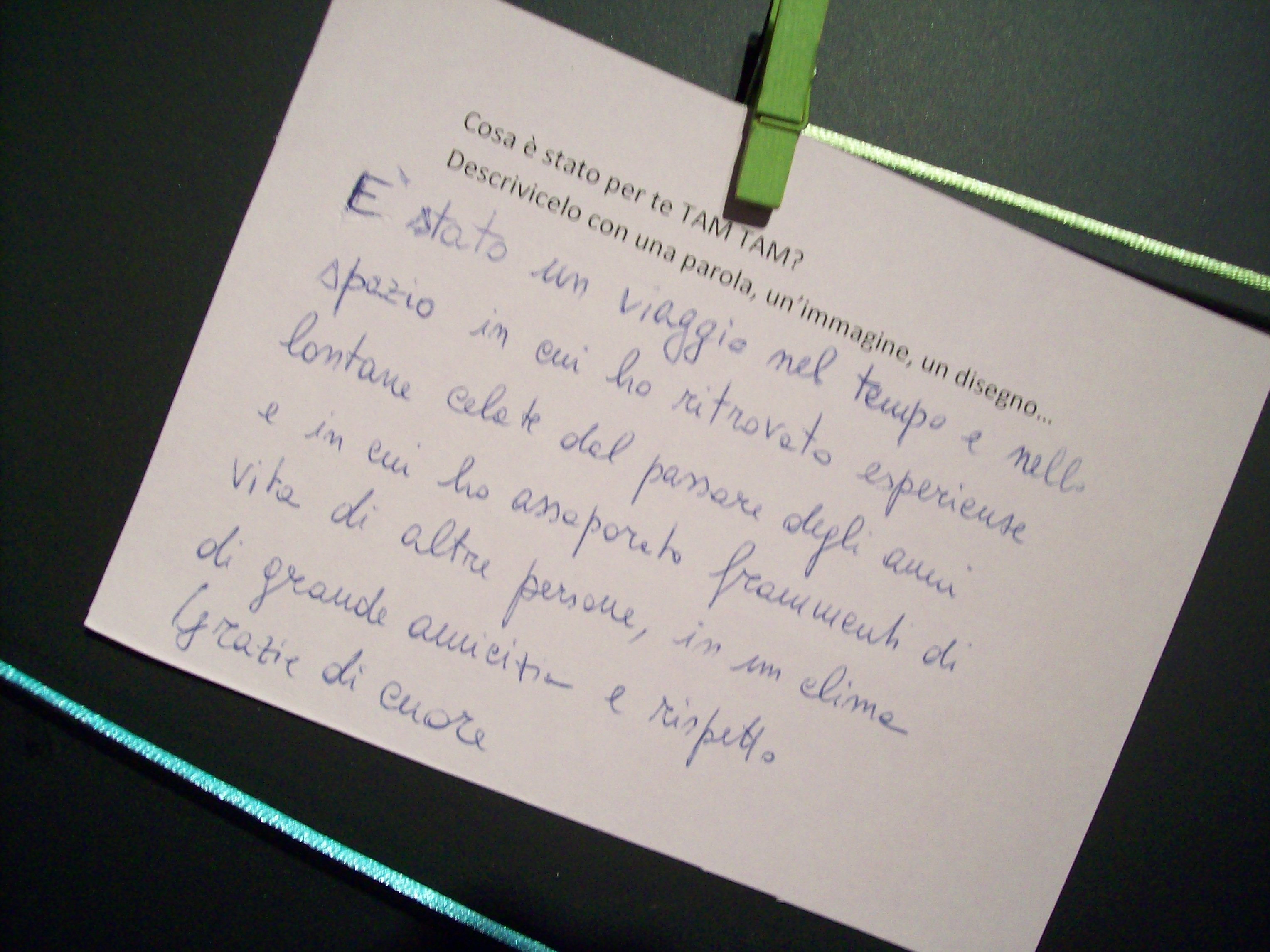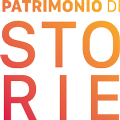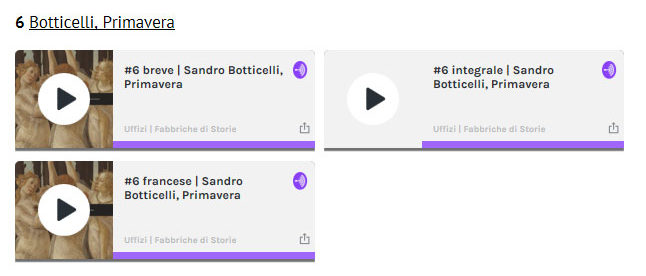SHARED TRAINING: WEAVING TOGETHER KNOWLEDGE AND SKILLS
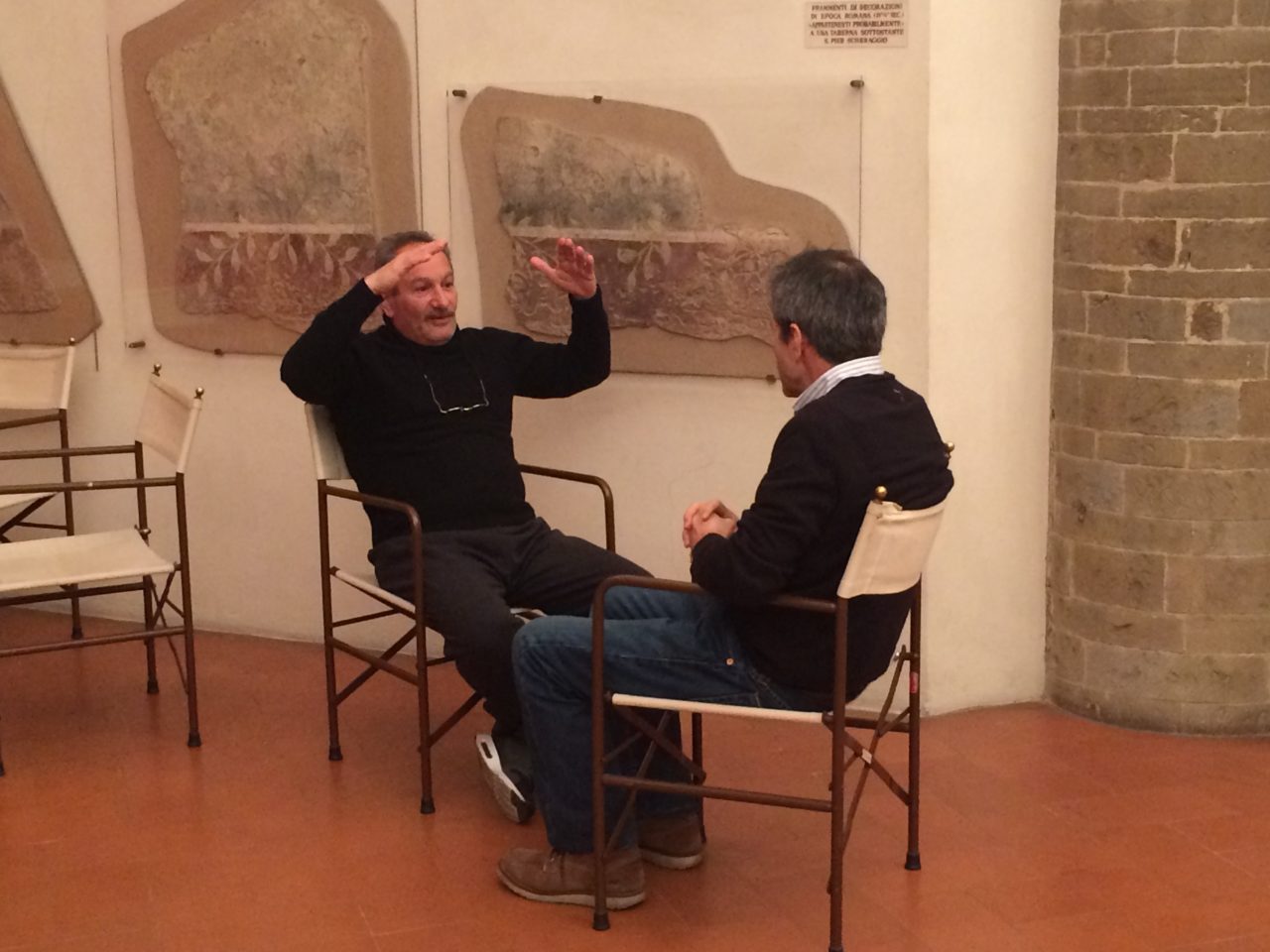
“Factories of Stories” project, photo by Maria Grazia Panigada
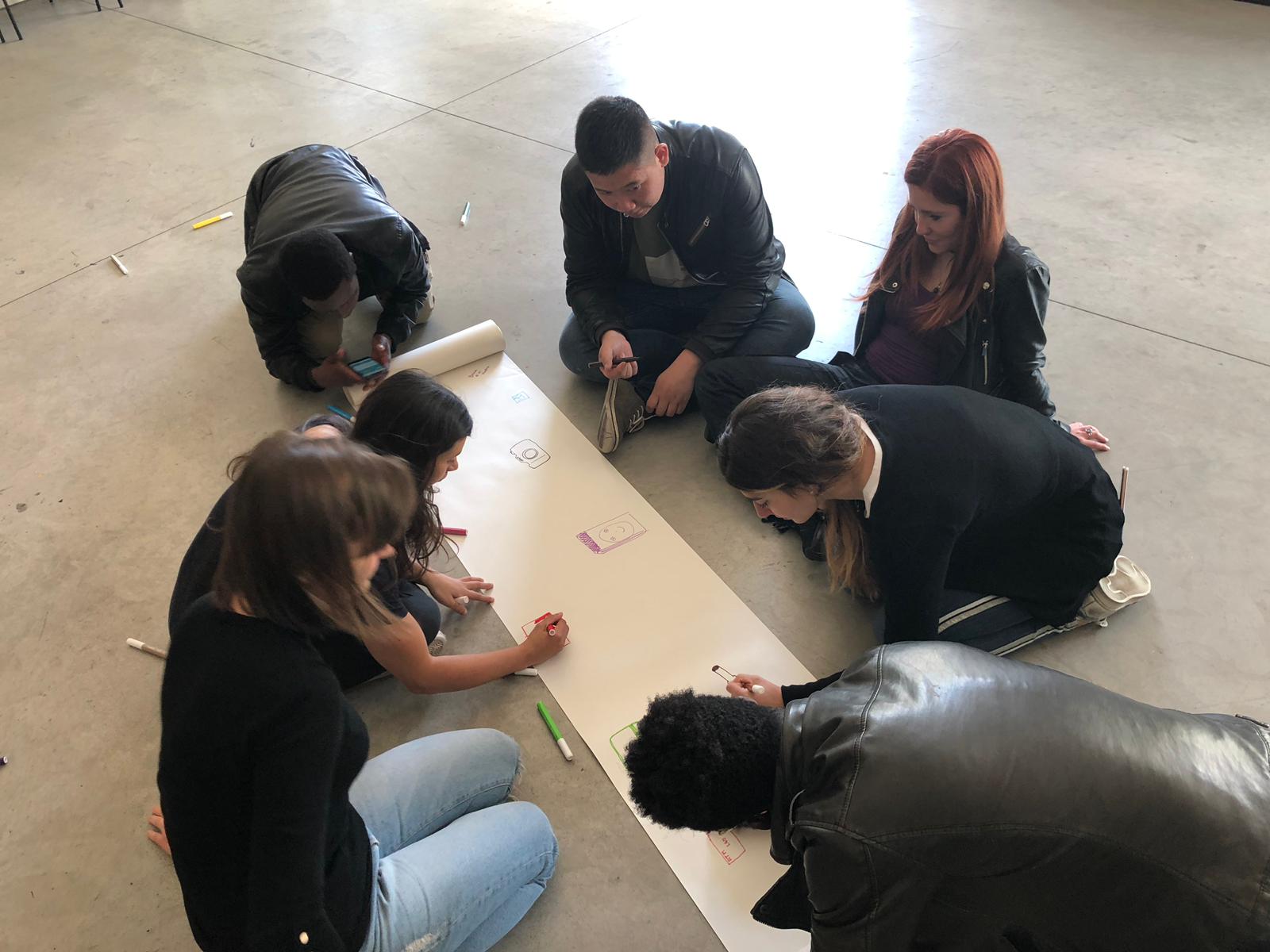
“Our time through the Seven Heavenly Palaces” workshop, photo by Simona Bodo
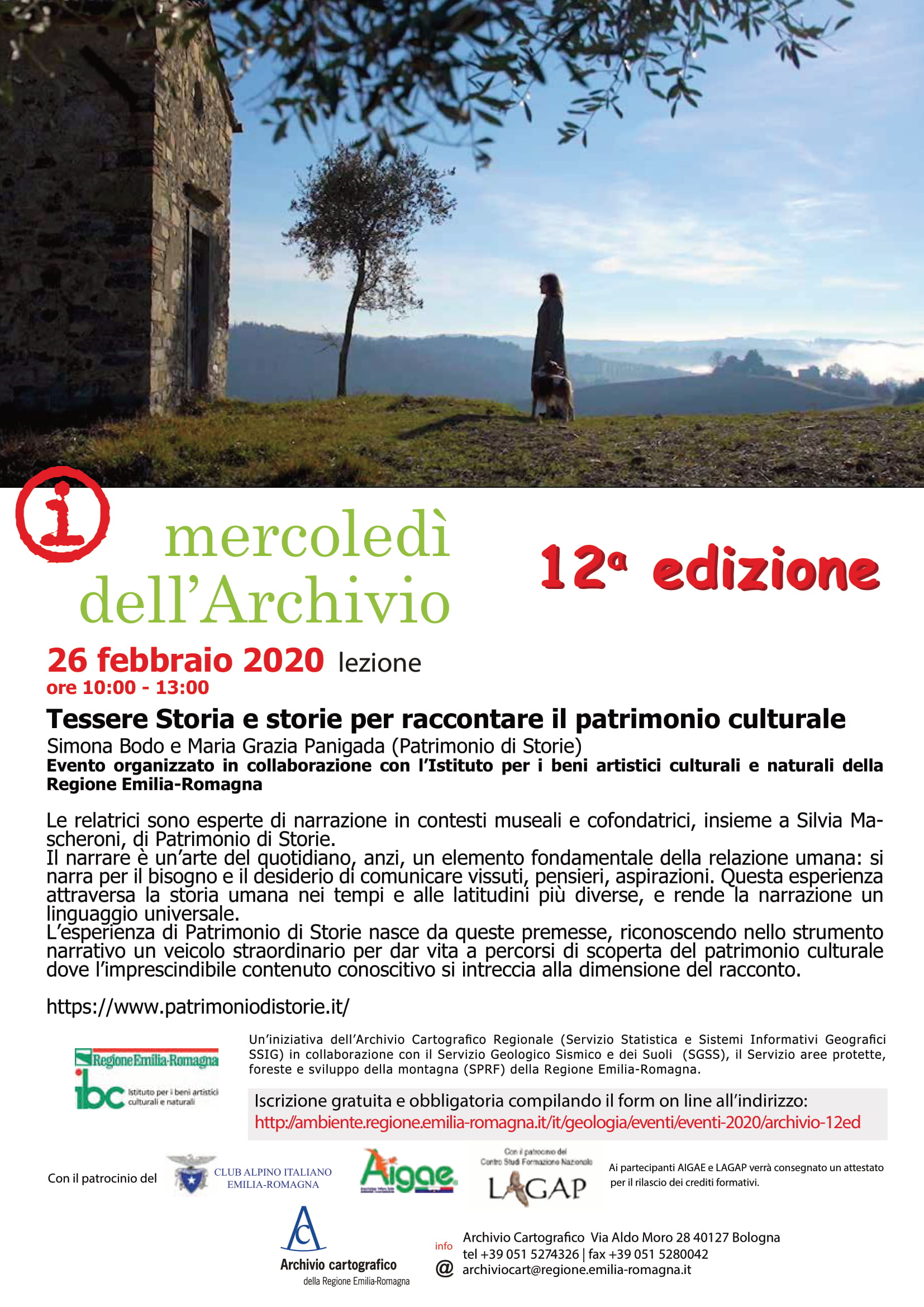
Training course for the Cartographic Archive of Regione Emilia-Romagna
Starting from shared training, all the phases of our projects are carefully tailored to meet the needs of the institutional and territorial context in which we are working.
Training is a crucial experience not only because it allows professional development, but also because it creates a relational environment where individuals from different professional and institutional contexts (museum curators, educators, guards; cultural mediators; teachers; non-profit operators…), as well as “simple” citizens, have the opportunity to weave together personal experiences, skills, languages and perspectives.
Therefore, our preparatory workshops are not only meant as an introduction to storytelling techniques, but are also aimed at creating a welcoming atmosphere, where group interactions are encouraged.
In this preliminary phase, we also devote particular attention to raise the curatorial staff’s awareness on the meaning and potential of storytelling in museum contexts, while at the same time making it clear that their role is paramount in supporting storytellers in the creation of narrative trails which are both evocative and “scientifically” accurate.
At the request of and/or in partnership with a diverse range of institutions (from the Milan Section of ANISA – Associazione Nazionale Insegnanti Storia dell’Arte to the Archivio Cartografico della Regione Emilia-Romagna) we also design and carry out ad hoc training courses/workshops, not necessarily connected with our own storytelling projects.
DEVELOPING THE NARRATIVE TRAILS
Storytelling as we understand it always involves spending hours in direct contact with the artwork, object or site chosen by the storyteller, looking at it, describing it, under our guidance. Whether storytellers are staying in front of an artwork, sitting inside a church or immersed in a landscape, time is the key for the perceived “sacredness” and “extraordinary” nature of that object or place to start dissolving.
Heritage is never used as a “pretext” or Rorschach inkblot: stories always arise from its intense scrutiny, and personal resonances are triggered by this thorough work of observation and description; only then will the storyteller be able to start interweaving factual information and historical content with a personal tale.
In this phase, our role is to guide storytellers, to provide them with further storytelling tools, and then to listen, to look for connections, references, images which may help them find the “heart” of their story. Because stories belong to storytellers, and our work is in the service of this experience.
On the other hand, we play a more active role once the story is finalised, trying to bring to the surface the expressive abilities of each individual, encouraging him/her to experiment with different styles and registers, looking for a balance between form and content.
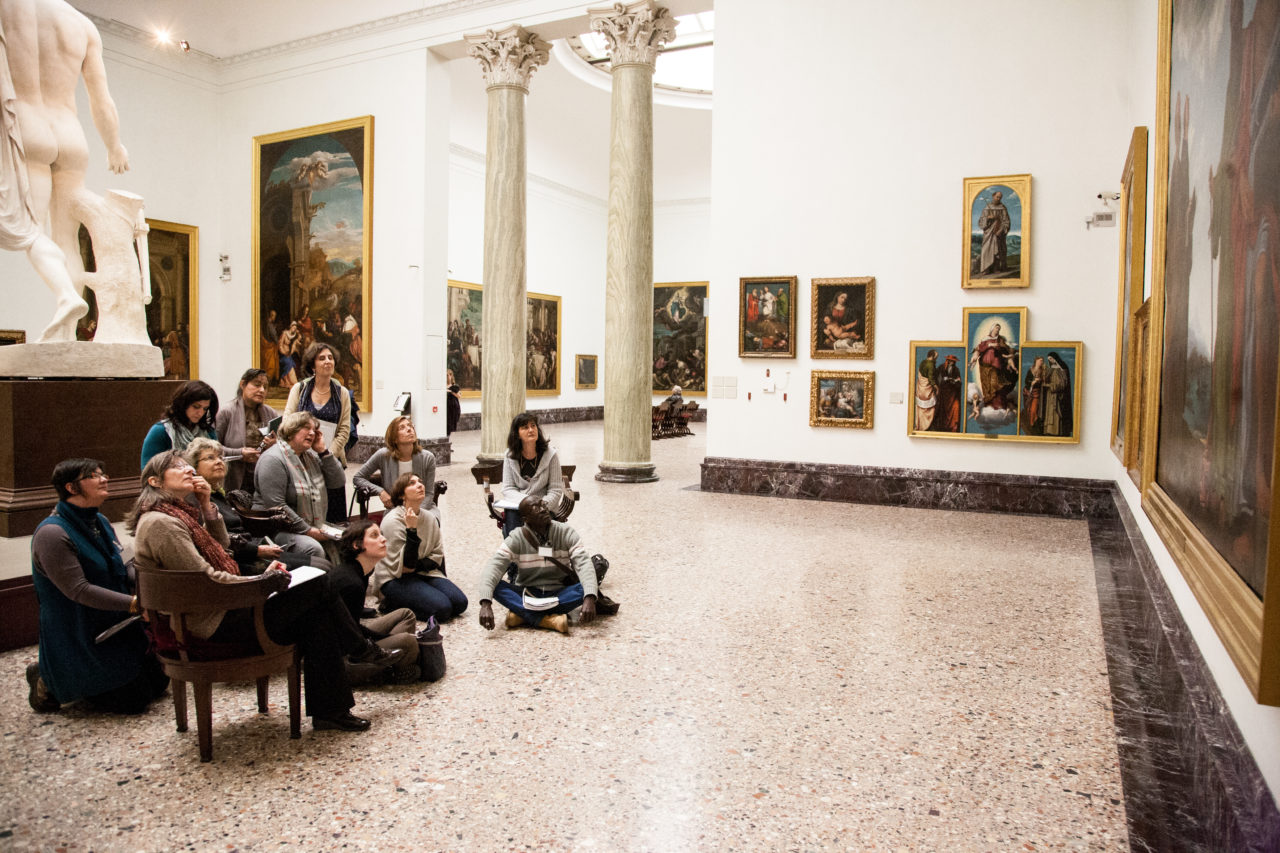
“Brera: another story” project, photo by Emanuela Daffra
EDITING AND FINALISING THE WRITTEN VERSIONS OF THE NARRATIVE TRAILS
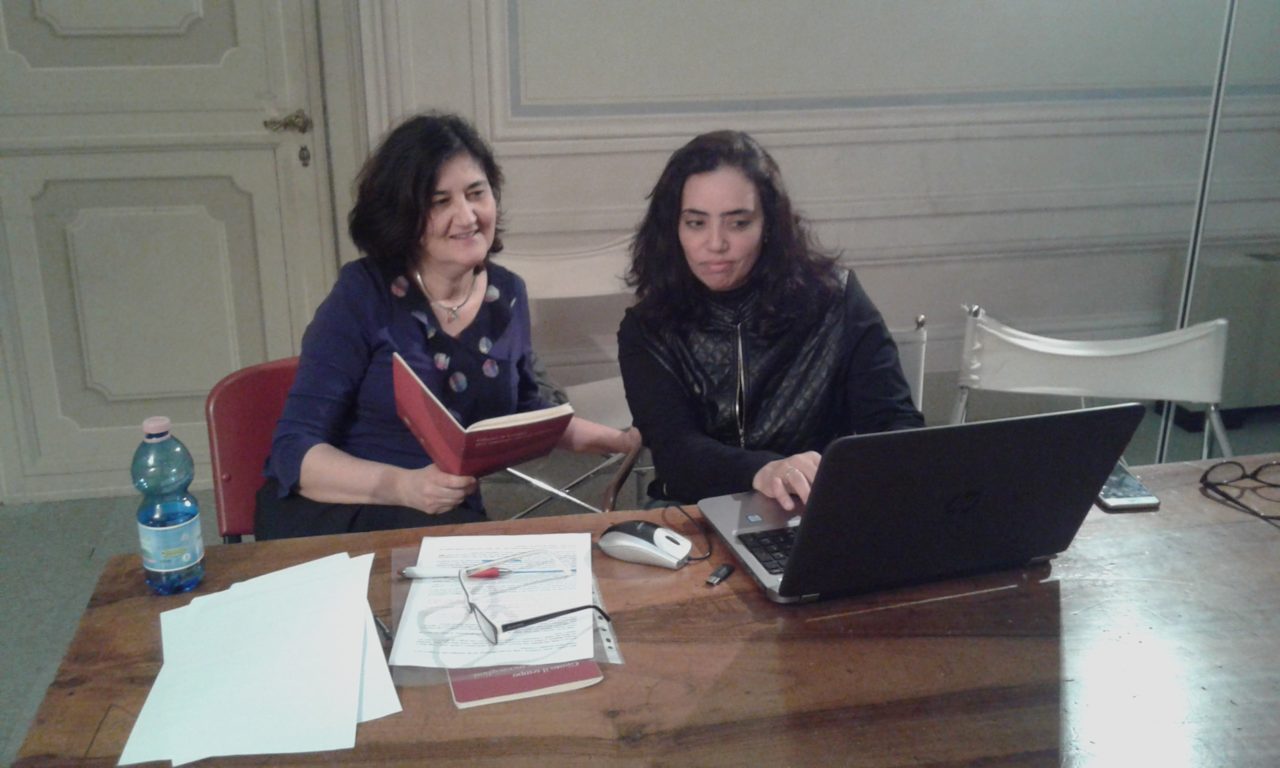
“Factories of Stories” project, photo by Simona Bodo
As a general rule, leaving a written trace of the stories is crucial to make sure that process and outputs of the project are properly documented, but above all to provide the basis for the creation of permanent visitor services (see below).
From a methodological point of view, drafting a written version of the narrative trails is also a way for storytellers to identify the heart of their stories, and carefully choose the images and words to convey them.
DEVELOPING PERMANENT VISITOR SERVICES
Narrative trails guided by storytellers and addressed to small groups of visitors/participants are a typical output of our projects. Stories connect and empower people, and the best way for this to happen is to allow a personal interaction to take place between the storyteller and his/her listeners: the act of telling a story is always incomplete and therefore “open”, with an extraordinary potential to trigger encounters between individuals, because what we are listening to “resonates” with our own experiences, emotions and memories.
However, the development of other visitor services is of vital importance, in terms both of securing continuity when the project is completed, and of reaching wider groups and audiences.
These include publications and guides, video-trails, audio-trails, “narrative” information panels and labels, etc., which we often design in partnership with qualified organisations such as Storyville or Teatro dell’Argine.
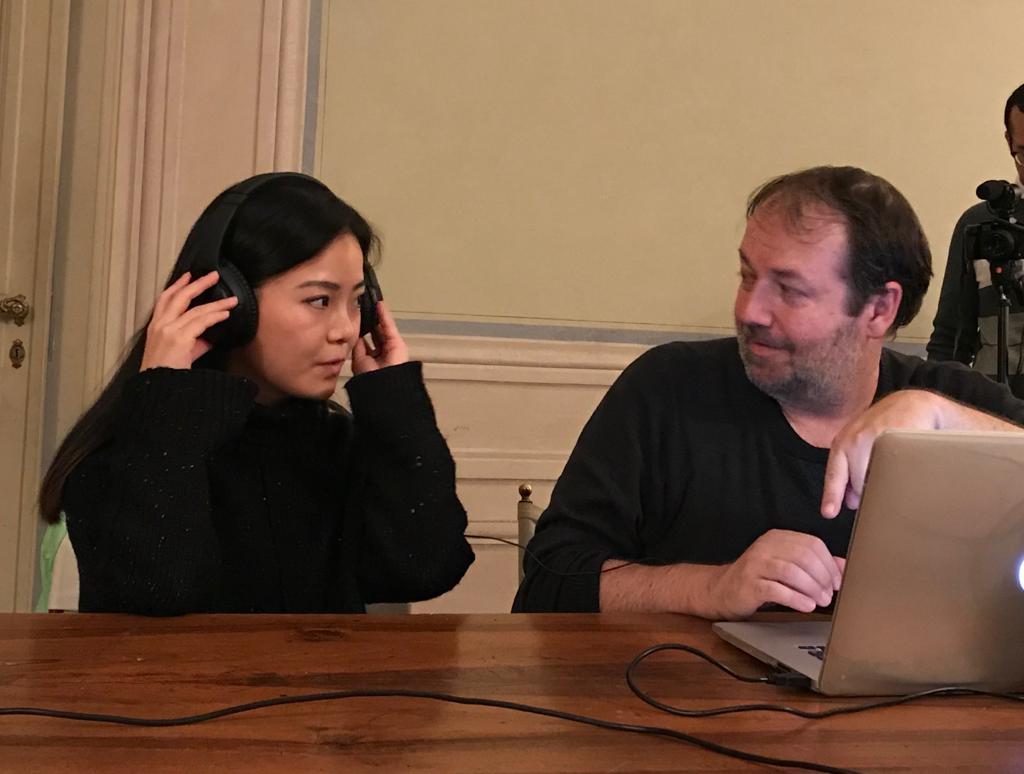
“Factories of Stories” project, photo by Maria Grazia Panigada
A FEW EXAMPLES:
The “Heritage Guardians” audio-trail created with the citizens of Cesenatico, also available in English and German
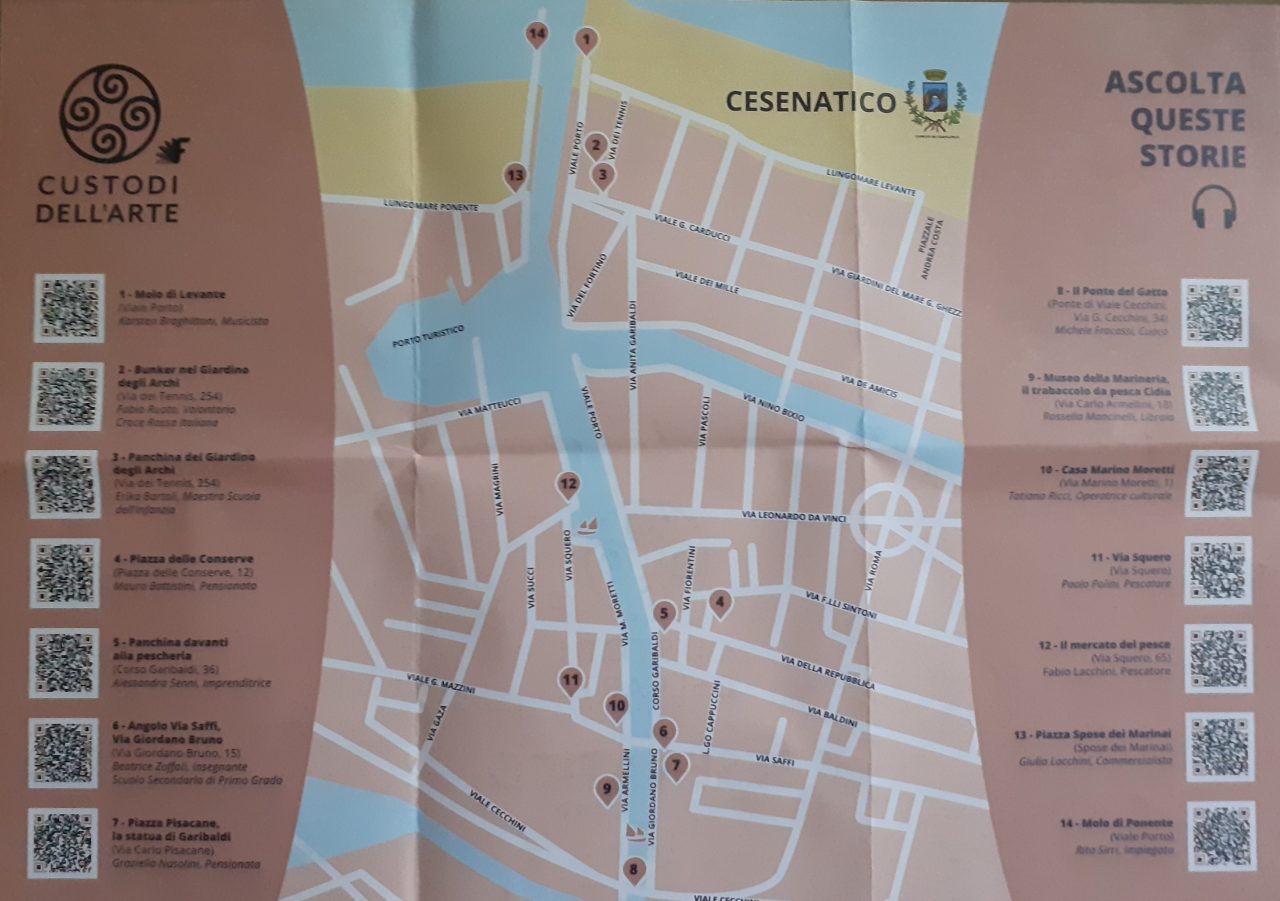
The publication Lascio in eredità me stesso alla terra (I bequeath myself to the dirt)
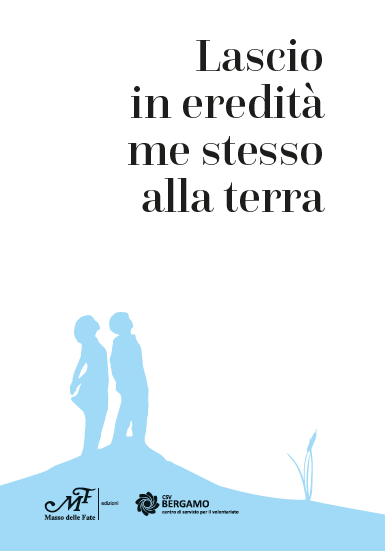
The “HyperVision” version of “Factories of Stories”, with HD pictures and the written texts available in English as well as in the mother tongue of storytellers with an immigrant background
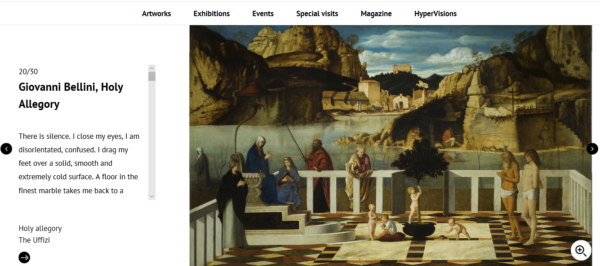
The trailer and video clips of “Words for pictures. Circular stories in Chianti and Valdarno museums”
The publication Dipingere a parole. Storie circolari del Chianti e del Valdarno
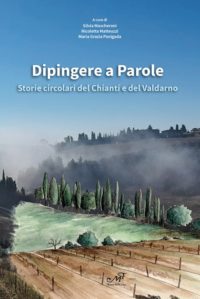
The calendar produced in the framework of “The Works and Days” project (Accademia Carrara Foundation and CSV – Service Centre for Charity Work, Bergamo)
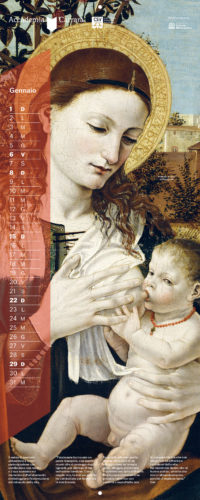
The catalogue of GAMeC permanent collections with the stories of “My Place – My Texts”
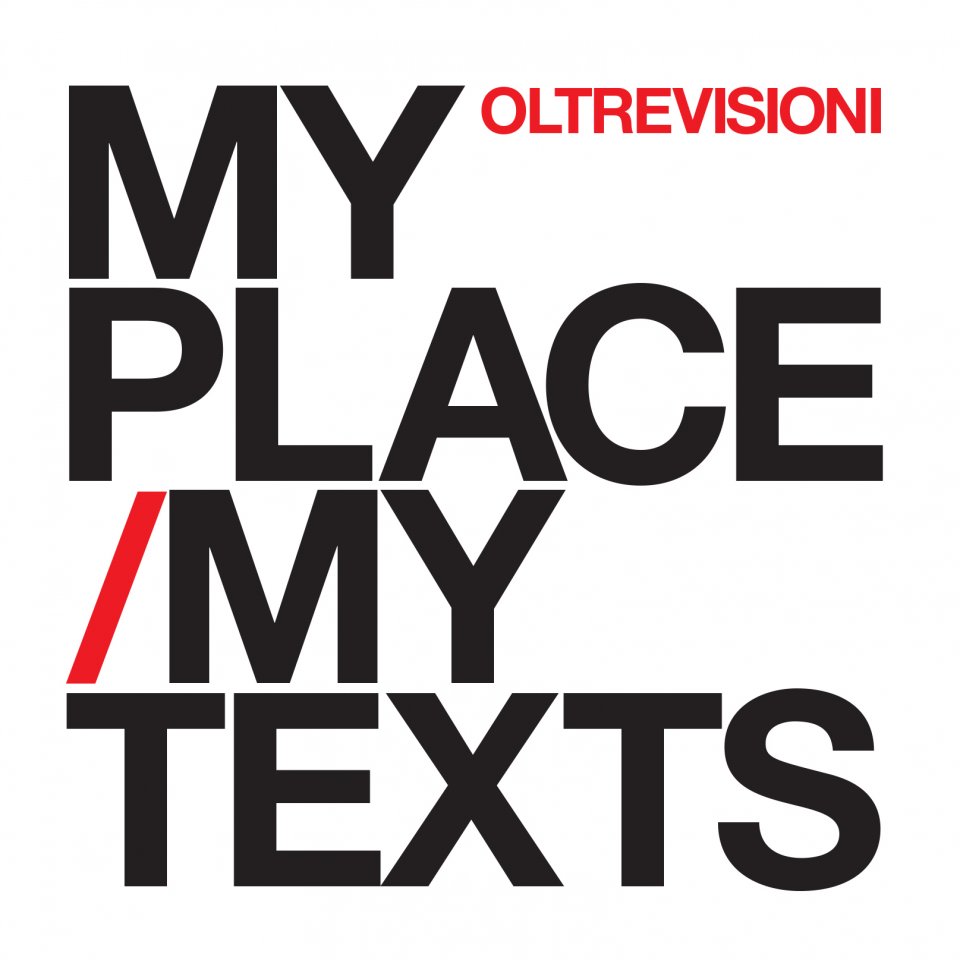
FRONT-END, FORMATIVE AND SUMMATIVE EVALUATION
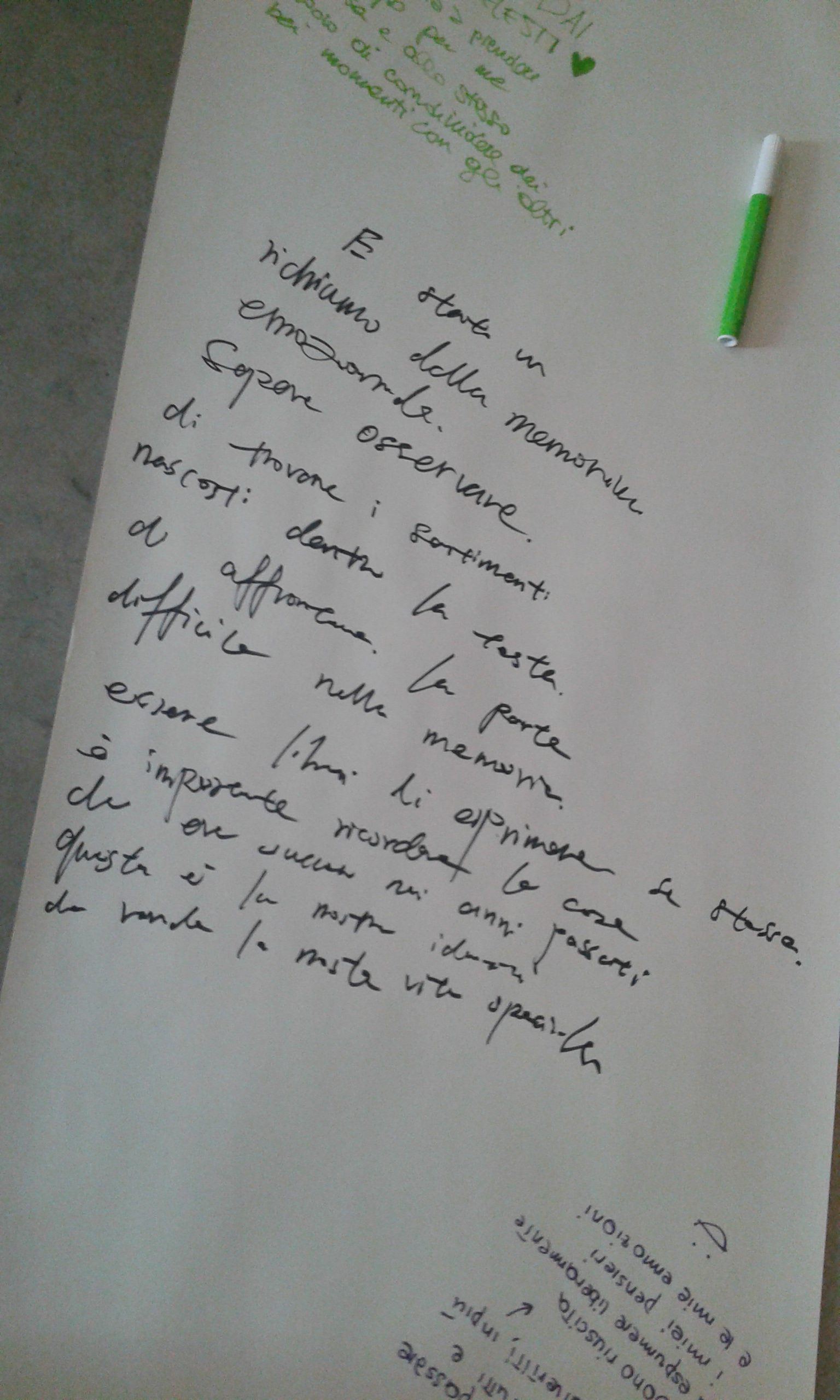
Summative evaluation of “Our journey through the Seven Heavenly Palaces” workshop participants
Taking the cue from a notion of “evaluation” as a multidimensional, participatory and ongoing process, we develop strategies and tools aimed at highlighting and reflecting a variety of perspectives, expectations, individual, societal and institutional impacts – e.g. quantitative/qualitative audience surveys; in-depth interviews with storytellers; focus groups with working group members; analysis of the materials and outcomes (both tangible and intangible) shared by the museum staff during the project…
